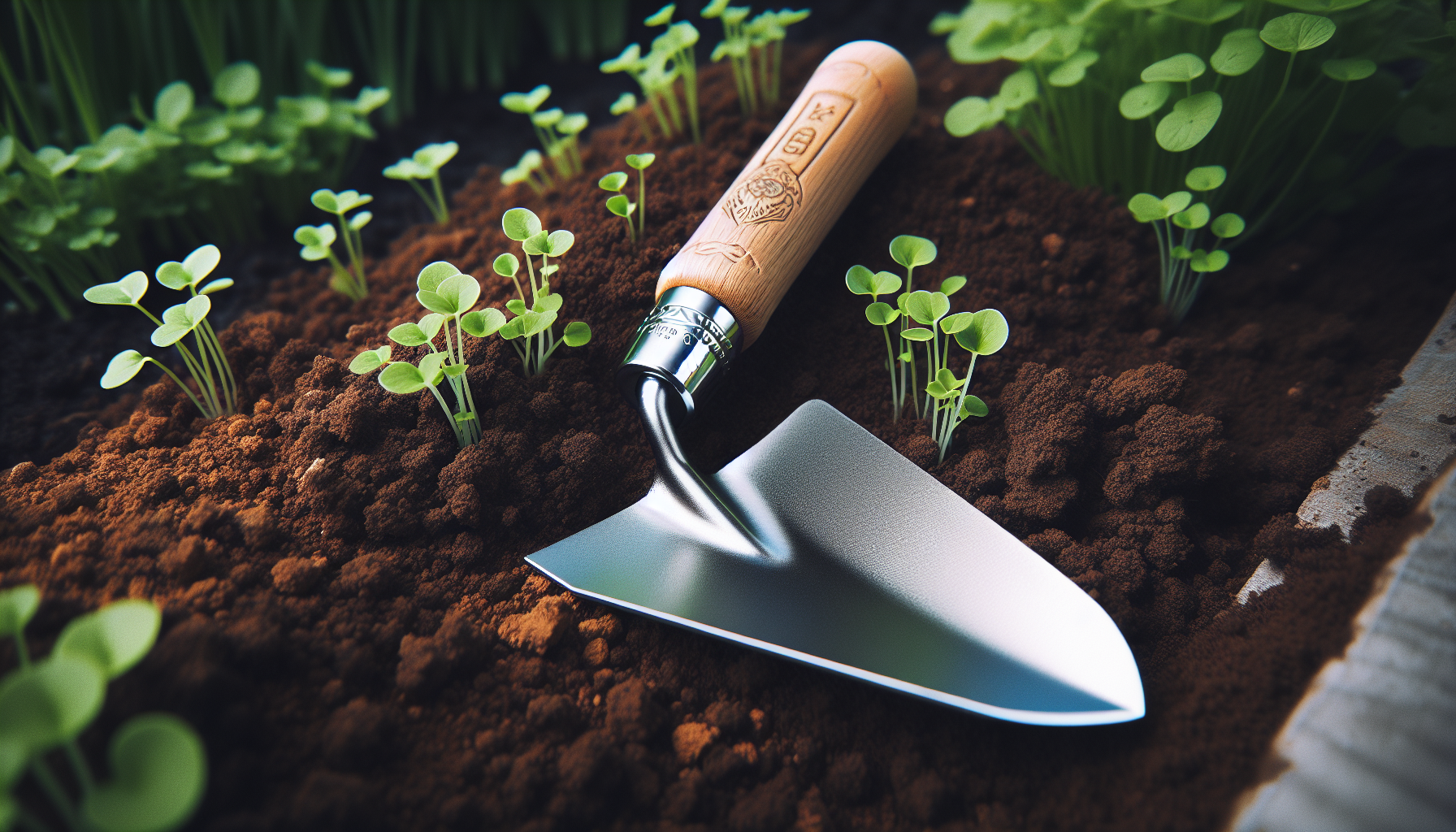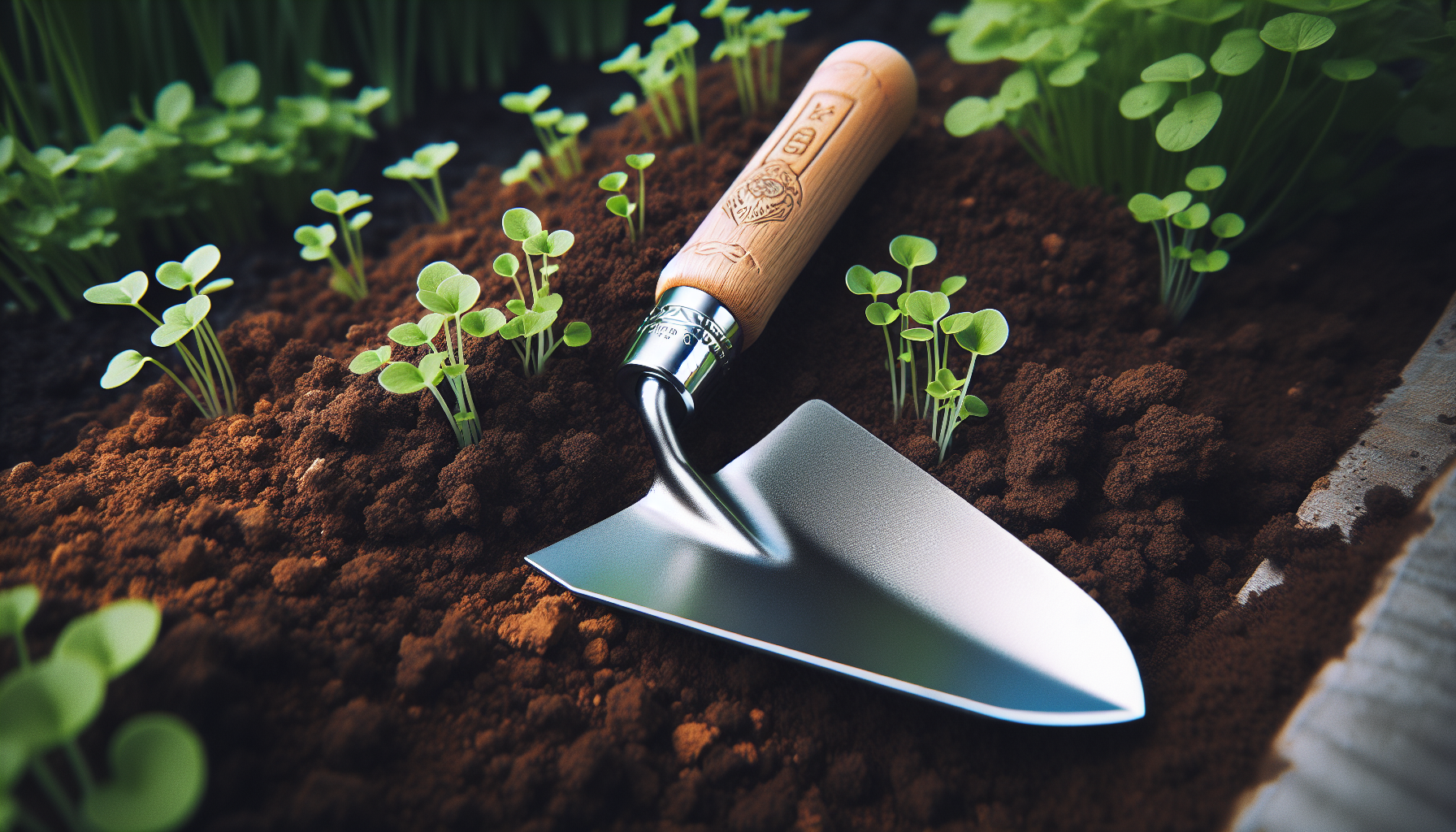Imagine having a small tool that effortlessly lifts plants or earth with ease – a tool that simplifies your garden and landscaping tasks. Whether you’re an avid gardener or simply want to beautify your outdoor space, this article uncovers the wonders of a small yet mighty tool that will revolutionize the way you work. From lifting delicate plants without damaging their roots to effortlessly transferring soil, this tool is the secret weapon you need to elevate your gardening game. So, say goodbye to backbreaking labor and hello to efficient, effortless gardening with this invaluable tool in your hands.

Introduction
If you’re an avid gardener or simply someone who loves surrounding yourself with beautiful plants, you’ve probably encountered the need for a small tool used for lifting plants or earth. Whether you’re transferring delicate seedlings, removing weeds, or digging a hole for a new plant, having the right tool can make all the difference in ensuring the health and success of your plants. In this article, we will explore the definition of a small tool, the purpose of lifting plants or earth, and the various types of small tools available for this task.
Definition of a Small Tool
When we refer to a small tool used for lifting plants or earth, we are talking about a handheld implement designed specifically for gardening tasks that involve moving soil or plants. These tools are typically lightweight, easy to maneuver, and specifically crafted to provide the necessary leverage and precision for lifting plants, digging, or loosening soil.
Purpose of Lifting Plants or Earth
The main purpose of using a small tool to lift plants or earth is to facilitate various gardening activities. This could include transplanting seedlings, creating holes for new plants, removing weeds, loosening compacted soil, and overall maintaining the health and appearance of your garden. By using the right tool for the job, you can ensure minimal damage to plants, efficient soil manipulation, and a more enjoyable gardening experience.
Types of Small Tools for Lifting Plants or Earth
-
Hand Trowel: A hand trowel is a small, handheld tool with a pointed tip and a curved or flat blade. It is perfect for transplanting seedlings, digging small holes, or removing weeds with precision. Its compact size and ergonomic design allow for easy handling and decreased strain on your wrist.
-
Garden Fork: A garden fork is a versatile tool with multiple prongs, often made of metal, attached to a handle. It is used for loosening compacted soil, turning compost, or gently lifting plants with minimal root disturbance. The prongs of a garden fork offer improved aeration and drainage in the soil.
-
Transplanting Spade: A transplanting spade is a smaller version of a traditional spade, designed specifically for moving plants from one spot to another. It typically has a narrow, pointed blade for easy insertion into the ground without causing excessive damage to nearby plants.
-
Dibber: A dibber is a simple tool used for making holes in the soil for planting seeds or bulbs. It typically has a tapered, pointed end and may be made of wood, metal, or plastic. Using a dibber ensures proper depth and spacing when sowing seeds or planting bulbs.
-
Soil Knife: Also known as a garden knife or Hori Hori knife, a soil knife is a multi-purpose tool with a sharp, serrated blade and a strong handle. It can be used for various tasks like cutting through roots, removing weeds, and slicing through compacted soil. Its versatility and durability make it a valuable addition to any gardener’s toolkit.
-
Bulb Planter: As the name suggests, a bulb planter is specifically designed for planting bulbs. It consists of a hollow, cylindrical tube with a handle on top, allowing you to dig precise holes at the appropriate depth for planting bulbs. This tool eliminates the guesswork and ensures uniform planting results.
-
Hand Cultivator: A hand cultivator is a small tool with multiple tines or prongs attached to a handle. It is used for loosening the soil, removing weeds, and breaking up compacted dirt. The tines of a hand cultivator are designed to penetrate the soil easily and effectively.
-
Claw Rake: A claw rake, also known as a hand rake, is a miniature version of a traditional rake. It consists of multiple tines set at an angle, resembling the shape of a claw. This tool is ideal for raking and leveling soil, removing debris, and breaking up clumps in small areas.
-
Hand Hoe: A hand hoe is a handheld tool with a sharp, flat blade attached to a handle. It is used for removing weeds, cultivating the soil, and creating furrows for planting seeds. The blade of the hand hoe effortlessly cuts through the soil, making gardening tasks more efficient.
-
Weed Puller: A weed puller, also known as a hand weeder or dandelion digger, is a small tool designed specifically for removing weeds from the root. It usually has a long handle with a curved tip, allowing you to dig into the soil and pull out weeds without exerting excessive effort. This tool helps eliminate pesky weeds while minimizing root disturbance to nearby plants.
Importance of Using the Correct Tool
Using the correct tool for lifting plants or earth is crucial for several reasons. First and foremost, it ensures the health and well-being of your plants. Different plants have unique root systems and sensitivities, and using the wrong tool can cause damage or stress to the roots, resulting in poor growth or even plant death. Additionally, using the correct tool improves your efficiency and saves you time and effort. Trying to use an improper tool can lead to frustration, wasted energy, and less-than-ideal gardening results.
Factors to Consider when Choosing a Small Tool
When selecting a small tool for lifting plants or earth, there are a few key factors to consider:
-
Task-specific: Consider the specific gardening tasks you will be performing and choose a tool that is designed for those tasks. Different tools excel at different jobs, so having a variety of tools that cater to your gardening needs can greatly enhance your overall gardening experience.
-
Ergonomics: Look for tools that have ergonomic handles, comfortable grips, and lightweight designs. Gardening can be physically demanding, and using tools that are ergonomic and easy to handle can prevent strain and fatigue.
-
Quality and Durability: Invest in high-quality tools that are built to last. Cheap, flimsy tools may break or wear down quickly, requiring frequent replacement. Opting for durable tools made from strong materials will save you money in the long run.
-
Size and Weight: Consider the size and weight of the tool, ensuring that it is suitable for your strength and intended use. Tools that are too heavy or unwieldy can make gardening tasks cumbersome and tiring.
-
Personal Preference: Ultimately, choose tools that you feel comfortable using. Everyone has their own gardening style and hand preferences, so selecting tools that align with your personal preferences will make your gardening experience more enjoyable.
Conclusion
A small tool used for lifting plants or earth is an essential companion for any gardener. From hand trowels and garden forks to dibbers and weed pullers, these tools assist in tasks ranging from transplanting seedlings to maintaining soil health. By understanding the purpose of lifting plants or earth and selecting the appropriate tool for the job, you can ensure the success of your garden and make the most out of your gardening endeavors. Remember to consider task-specific requirements, ergonomics, durability, size, and personal preference when choosing your trusty gardening tools. With the right tools in hand, you’ll be well-equipped to create a thriving and beautiful garden. Happy gardening!
